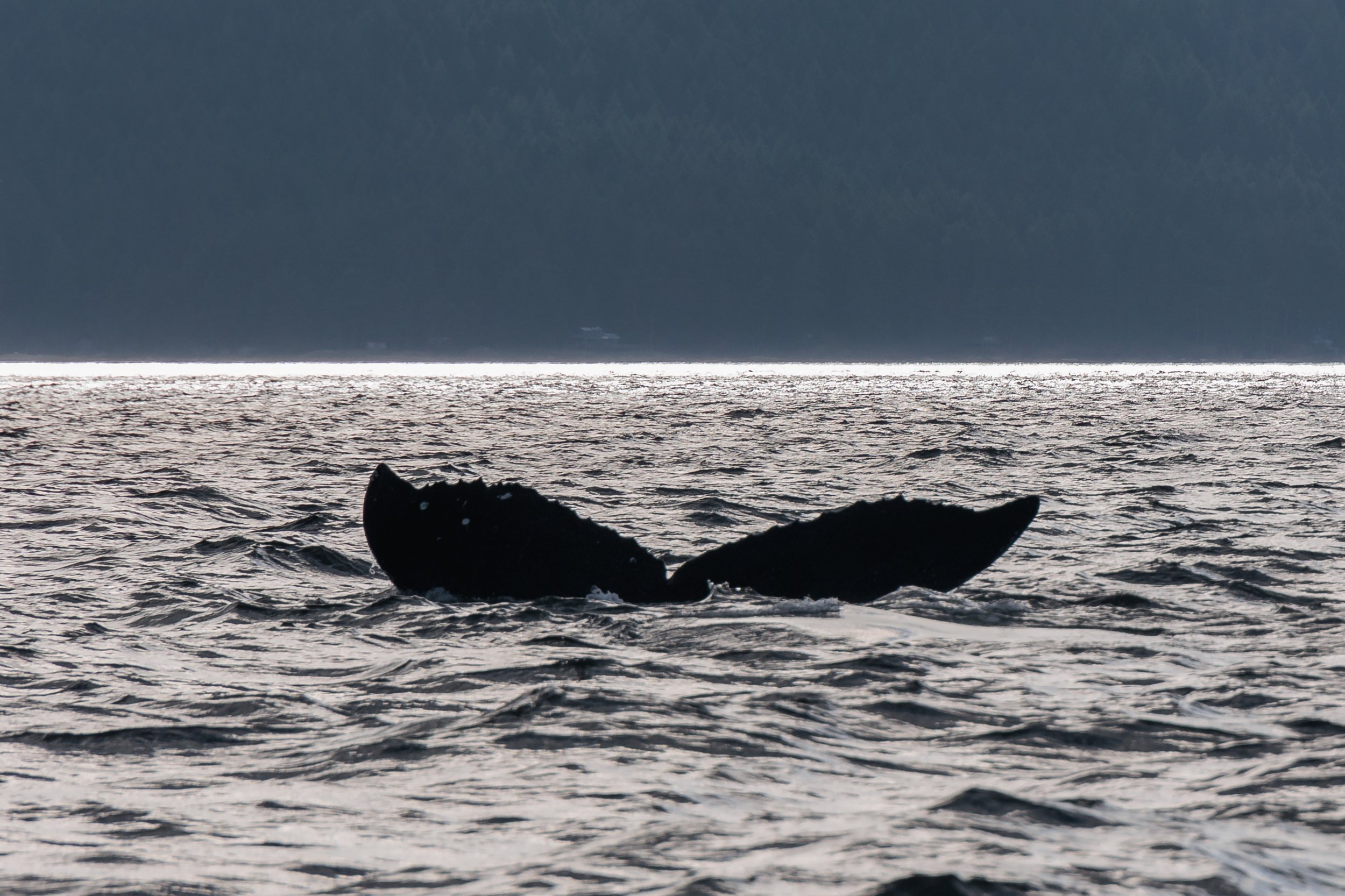August 9, 2023, 3:30 - T036s and Indy in Active Pass, plus Zig Zag and her calf!
Some familiar orcas plus Zigzag and her calf paid us a visit today! Orcas that were seen during our tour this afternoon included the following:
T065A5 Indy
T036 Flapjack
T036B Tattertip
T036B1 Bhotia
T036B2 Greenfelder
T036B3 Chip
We saw the same orcas during our tour on August 8th during our afternoon tour, so we were familiar with the dorsal fins of these whales on the scene today. We were also happy to see Indy still partying it up with the T036 family after spotting him with them yesterday.
The humpback whales spotted today were:
Zigzag (BCX1193) and her 2023 calf
Zig Zag was named after her ability to do zigzags while feeding and confusing any whale-watching boat trying to watch her. This season we have spotted her with a new baby. Zig Zag previously had two calves before her 2023 baby. In 2019, she had her first calf, Scuba, and in 2021 she had her second calf, Schooner. Earlier this summer season, we spotted Scuba and Schooner spending time together while feeding, which just goes to show what sort of knowledge of familial ties humpback whales have.
Female humpback whales need to eat more than 5,000 lbs of food every day while pregnant to support a growing calf. Anything that is present in the water when a humpback whale takes a big gulp of water gets eaten by them, which is mainly fish, krill and plankton. Once humpback whales have eaten plenty of food here in the Salish Sea, they head back to their warm-water breeding grounds in the winter. Places like Hawaii and Mexico are very common humpback whale breeding grounds for the humpbacks we see on our tours.
Warmer waters have a lot less food for the whales, so they aren’t able to eat much when they are breeding. The breeding grounds are also visited by pregnant females and it’s where they typically give birth to their calves. The females eat enough to produce very fatty nutrient-rich milk for their young to drink on their way back to their cold water feeding grounds in the Salish Sea. The trip back here can be dangerous, but we have confirmed that 10 female humpback whales in the Salish Sea have come back with a new calf this year.
Photos from this afternoon’s tour were taken by Marine Naturalists Des Poier and Ella Hillbrecht.
Zigzag surfacing outside Porlier Pass. Photo by Des Poier.
Zig Zag preparing to dive. Photo by Des Poier.
Zigzag with her calf in behind. Photo by Des Poier.
An Adult Bald Eagle. Photo by Des Poier.
Bald Eagle. Photo by Des Poier.
Some Juvenile Cormorants on the Bluffs. Photo by Des Poier.
Stretching out those wings to dry them out! Photo by Des Poier.
A beautiful sunset. Photo by Des Poier.
T065A5 Indy in front of T036B2 Greenfelder. Photo by Ella Hillbrecht.
Tail slap. Photo by Ella Hillbrecht.
T036B3 Chip, T036B1 Bhotia, and T065A5 Indy surfacing together. Photo by Ella Hillbrecht.
T036 Flapjack swimming through Active Pass. Photo by Ella Hillbrecht.
T065A5 Indy. Photo by Ella Hillbrecht.
T036B Tattertip. Photo by Ella Hillbrecht.
Another tail in the air! Photo by Ella Hillbrecht.
Zig Zag surfacing in the Strait of Georgia. Photo by Ella Hillbrecht.
Zig Zag surfacing with her calf in front. Photo by Ella Hillbrecht.
Zig zag and her calf. Photo by Ella Hillbrecht.
The underside of Zig Zags tail fluke. Photo by Ella Hillbrecht.
Zig Zag’s calf in front of Zig Zag herself. Photo by Ella Hillbrecht.
Zig Zag. Photo by Ella Hillbrecht.





















